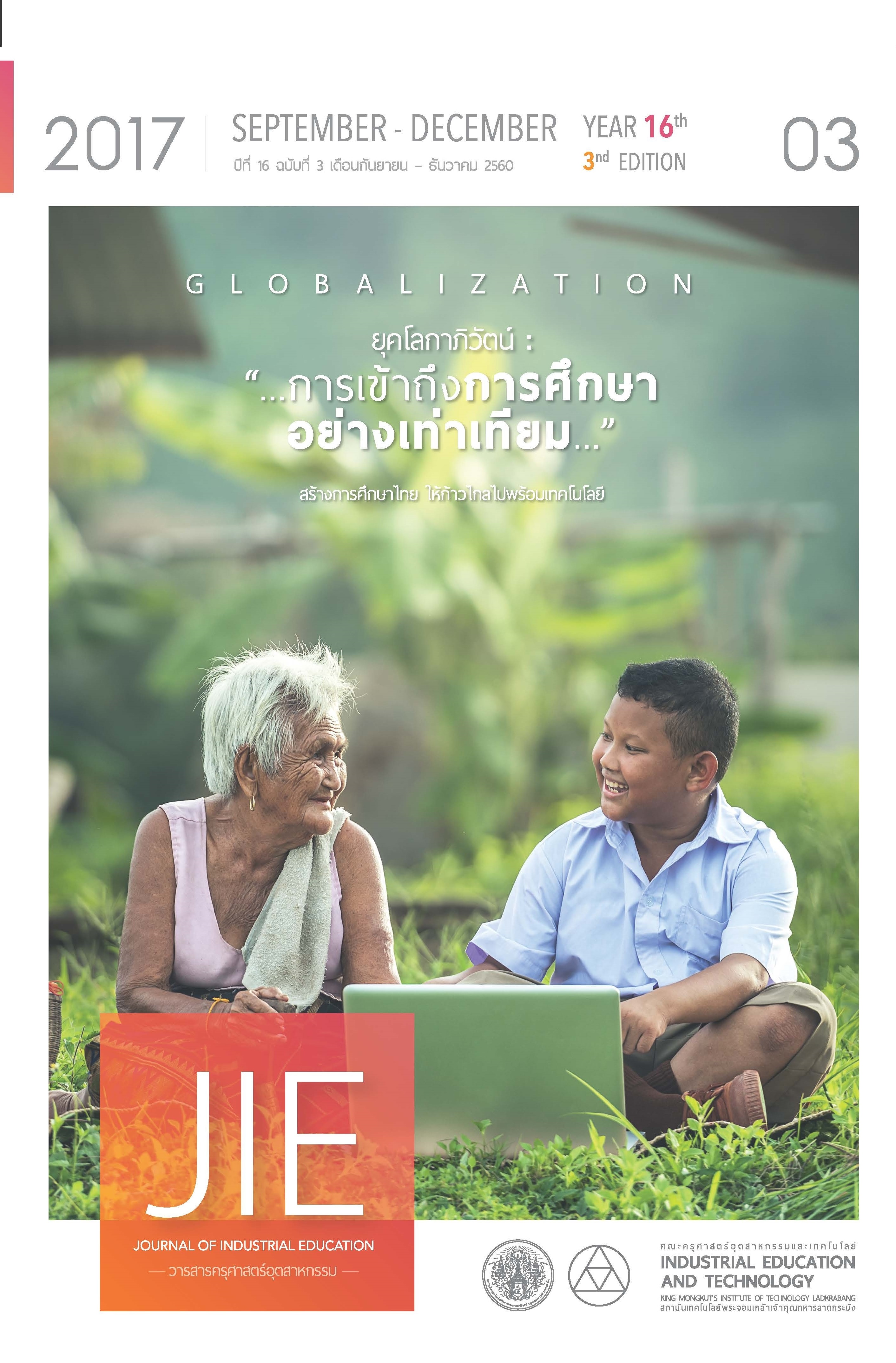GUIDED DEVELOPMENT OF DESIRABLE STUDENT TEACHER CHARACTERISTICS: YEAR 5 STUDENT TEACHERS IN THE FACULTY OF EDUCATION AT KASETSART UNIVERSITY
Main Article Content
Abstract
This research aimed to compare desirable student teacher characteristics before and after field experience and to propose the guided development of desirable student teacher characteristics. Purposive sampling was used to select a sample group of 177 executives and teachers from 38 educational institutions and 18 student teachers studying in Year 5 Business and Computer Education at Kasetsart University. The research instrument consisted of a note taking form, a questionnaire for participants’ opinions of desirable student teacher characteristics and guided development, and a reflection form. The statistics used were content analysis, mean, standard deviation, and t-test.
The findings revealed that the average post-test scores of desirable student teacher characteristics were significantly higher than the pre-test scores at the .05 level of significance. On the one hand, the executives and teachers surveyed expected student teachers to demonstrate desirable teacher characteristics in four aspects in respect to documents and related research and three further aspects in terms of individual characteristics, learners, and teacher related roles. On the other hand, the student teachers revealed that there were three ways that developed them, namely, authentic experience, advice and support form educational personnel and continuous preparation by their teacher training institution.
Thus, it can be concluded that desirable student teacher characteristics should comprise seven aspects in respect to documents, related research and opinions of executives and teachers at educational institutions. Student teachers demonstrated desirable teacher characteristics better after their field experience. When studying guided development, executives and teachers expected teacher training institutions to equip student teachers with these teacher characteristics before entering field experience, while student teachers indicated that they were developed through authentic experience, advice and support from educational personnel and continuous preparation from their teacher training institution.
Article Details
"The opinions and contents including the words in papers are responsibility by the authors."
"ข้อคิดเห็น เนื้อหา รวมทั้งการใช้ภาษาในบทความถือเป็นความรับผิดชอบของผู้เขียน"
References
[2] ffice of the Education Council. (2008). Rāingān tittām læ pramœ̄nphon kānčhatkān rīanrū radap kānsưksā naphư̄n thān. (N.P.).
[3] Praweena Aiemyeesoon. (2016). Problems and Guided Development in Professional Experience Training of Teacher Students from Faculty of Arts Education Bunditpatanasilpa Institute. The 1st Rajamangala University of Technology Suvarnabhumi National ference. Phra Nakhon Si Ayutthaya.
[4] Chaweewan Suwannapha, Onanong Woowong and Patnaree Attawong. (2011). Professional Experiences Training in Education of Students of Mahachulalongkornrajavidyalaya University, Phrae Campus. Research Report. Mahachulalongkornrajavidyalaya University Phrae Campus.
[5] Teacher Committee, Department of Education. (2001). Kanpatirū kān sanhā khrū. Bangkok: Printing House of the Teachers’ Council of Thailand. Retrieved March 20, 2016, from https://e- book.ram.edu/ e-book/c/CU503/CU503-4.pdf
[6] Kwandao Chatamontra. (2011). Kānsưksā khunnalaksana khō̜ng khrū thī phưng prasong tām thatsana khō̜ng nakrīan radap chan prakāsanīyabat wichāchīp læ prakāsanīyabat wichāchīp chan sūng. Research Report. Uttaradit Technical College.
[7] Piyanard Junlek and et al. (2009). The Opinion of Administrators and Mentor Teachers toward Teaching Experience Management of Department of Agricultural Education, Faculty of Industrial Education, King Mongkut’s Institute of Technology Ladkrabang. Journal of Industrial Education, 8 (2), p.86-98.
[8] Kanitta Hinon and Surapan Tansriwong. (2015). The Problems of the Practice of Professional Experience Teaching and the Solutions for Future Improvement, Faculty of Technical ucation, King Mongkut's University of Technology North Bangkok. Technical Education Journal, King Mongkut’s University of Technology North Bangkok, 6 (1), p.159-167.
[9] Administrative Committee of Office of the Teachers’ Council of Thailand (2011). Laksana khrū thī dī tām kēn pramœ̄n sanhā khrūdī dēn khō̜ng khuru saphā. (N.P.).
[10] Suthep Thammatakul and Anuwat Koongaew. (2012). A Study of Characteristics of the New Generation Teachers. Faculty of Education, Phetchabun Rajabhat University.
[11] Sukhontha Thongborisut. (2010). Desired Characteristic of Veterinary Instructors as Perceived by Students at Chulalongkorn University. Thesis in Master of Education Degree in Higher Education, Srinakharinwirot University.
[12] Ratchanee Ngasamun. (1990). Kānsưksā khunnalaksana khō̜ng khrū thī phưng prasong tām thatsana khō̜ng nakrīan radap matthayommasưksā sangkat krom sāman sưksā čhangwat satūn. Thesis in Master of Education, Srinakharinwirot University (Thaksin University).
[13] Surachart Sungrung. (1994). Kānphatthanā rabop kān sanhā khārātchakān khrū. (N.P.).
[14] Riruengrong Ratanavilaisakul. (2002). A Study of the Lecturer’s Characteristics Perceived as Desirable by King Mongkut’s University of Technology Thonburi Students and Lecturers. KMUTT Research & Development Journal, 25 (2), p.149-165.
[15] Preedaporn Duangjaidee and et al. (2012). Khunnalaksana khō̜ng naksưksā fưk prasopkān wichā chīp khrū tām thatsana khō̜ng phū thī kīeokhō̜ng. Journal of Institute of Physical Education, 14 (2), p.19-25.
[16] Waro Phengsawat. (2000). Kānsưksā patčhai bāng prakān thī samphan kap kān fưk prasopkān wichāchīp khrū. Academic Service Journal, 11 (3), p.6-16.

